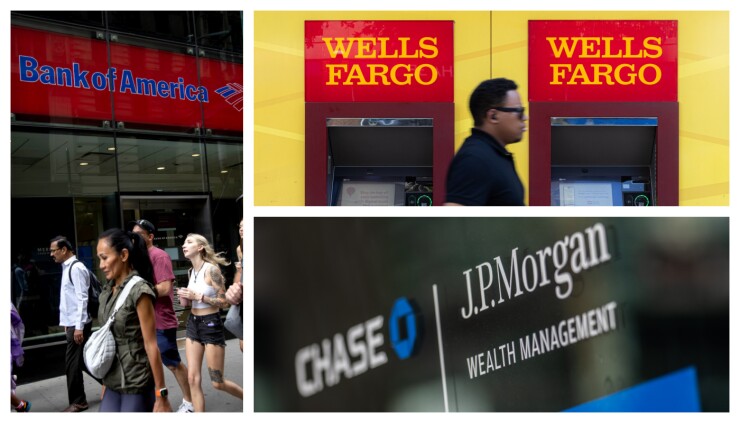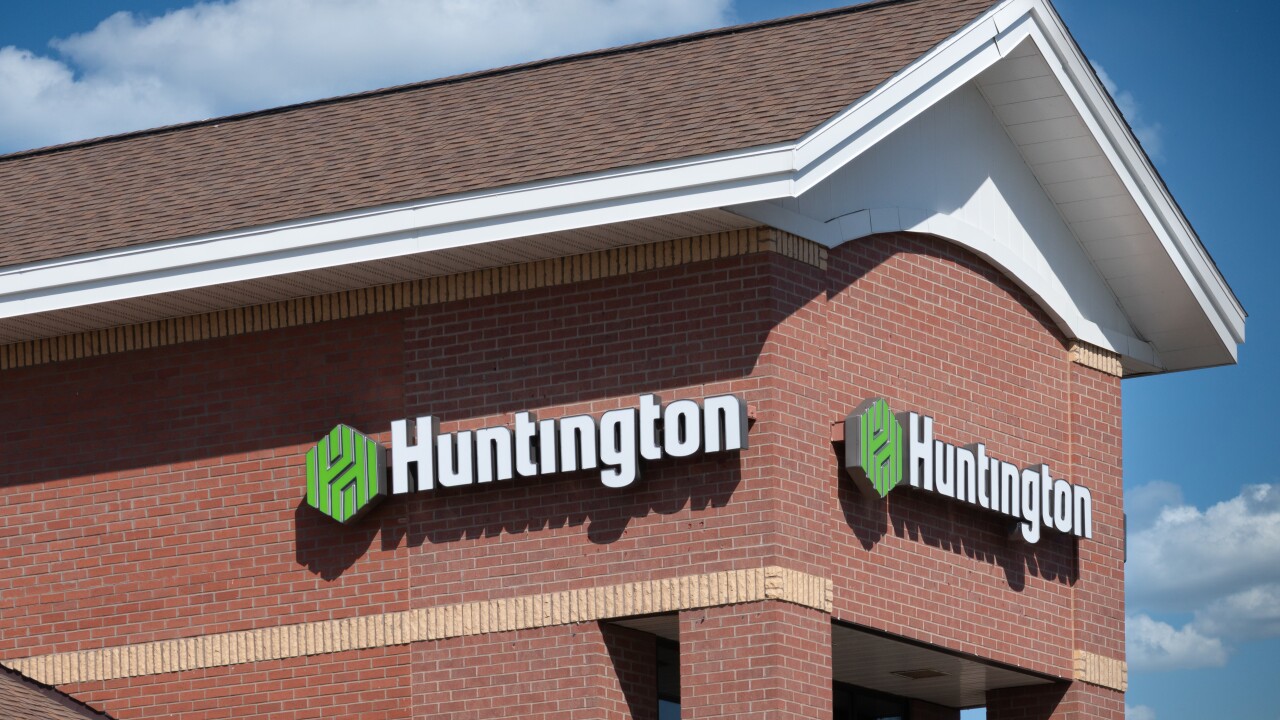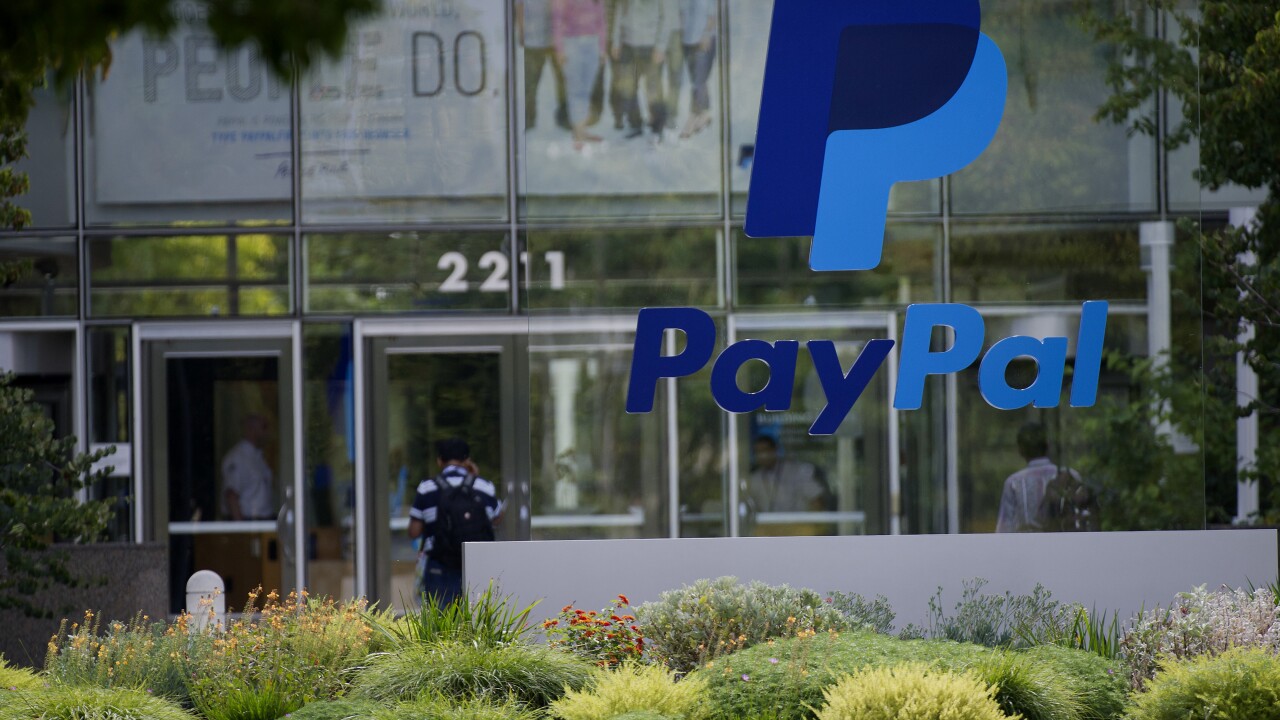UPDATE: This article adjusts the number of Citibank branches to include only U.S. branches. The number cited in an earlier version of the article also included Citi branches in other countries.
Banks were busy reworking their branch networks in 2024, with most resuming closures while a few opened shop at new locations.
The pace of closures was rapid — in the third quarter alone, U.S. banks closed 439 branches on net, according to
Big and regional banks continued to trim their branch networks, though JPMorgan Chase was a notable exception and opened more branches than it closed.
Geography was a driver of the decisions, as banks cut branches that they deemed overlapping with nearby ones or opened offices in new markets. But the considerations go far beyond a branch's Zip code, said David McGibbon, a Charlotte-based banking consultant at the firm Baringa.
As they consider which branch to cut, banks are thinking about whether a location is better-geared for teller transactions, sit-downs with advisors or purely to have a big flashy marketing outpost in a busy downtown.
And in the past couple of years of banks battling for deposits, the industry is weighing whether one branch brings in more deposits than others and should therefore stay open.
"There's not a one-size-fits-all approach to branches," said McGibbon, who heads Baringa's financial services group in the South. "Banks are looking at: What is the purpose of the branch network they have?"
Below is an overview of branch moves from select big and regional banks over the 12 months ended Sept. 30, according to S&P data. The S&P analysis looked at the most active branch openers and closers in the country, which did not include Citigroup and its retail subsidiary Citibank. The latter has nearly 650 U.S. branches, according to Federal Reserve data.
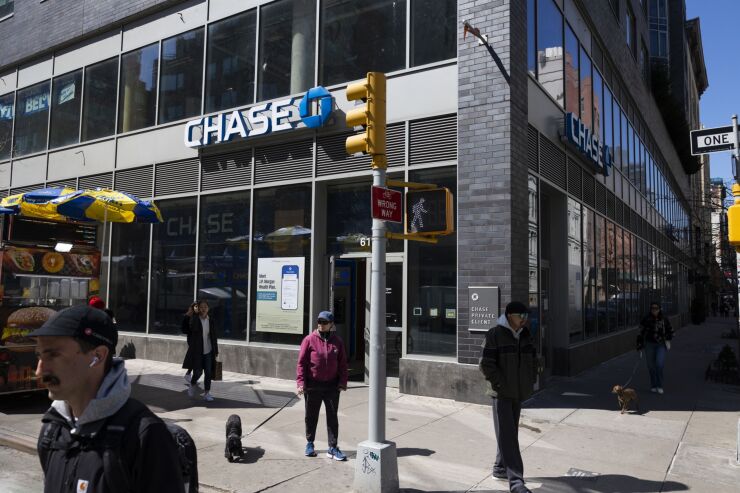
JPMorgan Chase: 38 net openings, 4,909 branches total
The country's biggest bank is an outlier among its megabank peers, as it
In February, Chase said it would open more than 500 new branches by 2027, including by entering more lower-income and rural areas where banks are scarce. The company is also expanding in Boston; Charlotte, North Carolina; Minneapolis, Philadelphia and the Washington, D.C., area.
The bank has branches in every U.S. state except Hawaii and Alaska, a feat it accomplished in 2021.
Chase is still trimming certain branches where it makes sense, and it can quickly ramp that up if it turns out branches become less important than executives think. But for now, some 900,000 people are visiting Chase branches every day.
"People like to visit their money," Chairman and CEO Jamie Dimon said at a conference in May.
The bank has changed the look and feel of its branches, which have become more advice-oriented than focused on teller transactions, Dimon said. But it's keeping in mind that closing any branch means opening the door for another competitor to swoop in.
Executives have to be "very analytical about what you close, why you close it, where you can keep," he said.
Dimon recalled instances where he stopped specific branch closure plans, warning executives that: "If you close that branch, you know who's going to open there? Wintrust, Cap One. Like tomorrow, take the lease, move in."

Bank of America: 91 net closures, 3,705 branches total
Bank of America closed dozens of branches over the past year, but the Charlotte-based company is doing an expansion of its own.
The closures have occurred in some major metro areas such as Atlanta, Boston, Los Angeles, Miami, New York City, San Francisco and the Washington, D.C., area, according to
But it's also been opening its doors in new markets where it hasn't had a major presence or where it wants to beef up its footprint.
In September, the company said it would
The hope is that BofA can start becoming a major player in the state, mirroring the results of its first Denver branch 10 years ago, CEO Brian Moynihan told analysts in October. Other markets where BofA has expanded include Minneapolis, Indianapolis, and Columbus, Ohio.
"You see continued progress by us in all these markets, moving from nowhere to into the 10th and seventh and eighth [place], and we keep building that out," Moynihan said.

Wells Fargo: 188 net closures, 4,274 branches total
Wells Fargo also closed more locations than it opened, although executives have said branches remain critical and customers of all income brackets like in-person help.
The bank has continued to optimize its network, with its total branches falling 5% from a year earlier, CEO Charlie Scharf told analysts in July. But it's also investing in updating its existing branches and plans to refurbish all its branches.
"We are being more strategic about branch location strategy," Scharf said.
At a conference in May, Scharf said the company is doing "very little" to expand its branch footprint. It is boosting its presence in some markets where it sees room to grow, such as Chicago or New York. But Scharf said his bigger focus is ensuring its current footprint can operate the best it can, both in figuring out what clients need and delivering solid profitability.
As an example, he recalled his early days in retail banking, when he was one of Dimon's top deputies when the JPMorgan Chase CEO took over Bank One Corp. The company wasn't growing or serving customers as well as it could have despite having a high-quality Midwest franchise, Scharf said.
The pair ultimately overhauled the bank, which merged with JPMorgan Chase in 2004 and is now the biggest bank in the country.
"Before you take what you do elsewhere, you should actually feel like you're doing it really, really well and you've got it all figured out," Scharf said.

Toronto-Dominion Bank: 43 net closures, 1,136 branches total
The Canadian bank once had ambitious plans to expand its already large U.S. footprint, but the company's legal woes over poor anti-money-laundering protections have scuttled it.
After its attempt to buy First Horizon in Memphis, Tennessee,
The company had a goal to build 150 branches by 2027, but the CEO of its U.S. banking arm, Leo Salom,
"I'm not making the claim that we cannot grow the stores," Salom said. "But I also want to be very clear that we are in the midst of discussion with regulators, and I don't want to prejudice any of those conversations at this point."
He promised to share more details with investors once "we're in a position to provide greater clarity."
TD got a painful amount of clarity in October,
To stay under that cap, TD's U.S. bank is
As part of its regulatory penalties, the Office of the Comptroller of the Currency is also forbidding it from opening new branches or entering new markets without getting the agency's explicit sign-off.
Bharat Masrani, TD's
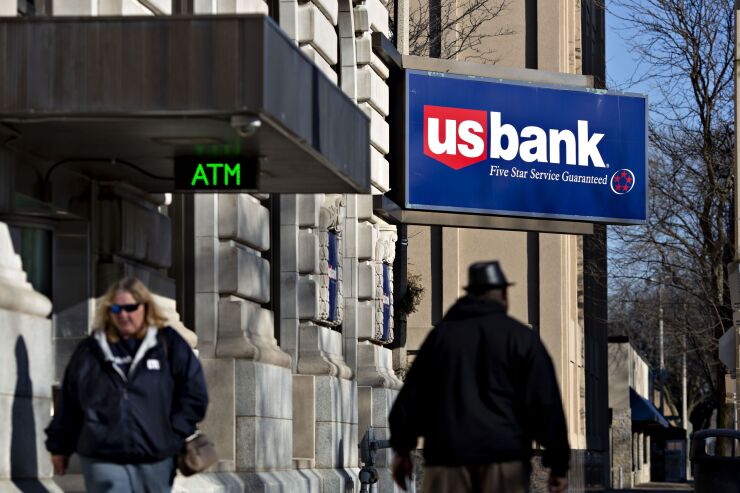
U.S. Bancorp: 98 net closures, 2,224 branches total
The Minneapolis-based bank closed a net of nearly 100 branches over the 12-month period.
It's been able to trim its branch network over the years, thanks to "great digital capabilities that allow for transactions to occur on your phone," U.S. Bancorp Chairman and CEO Andrew Cecere said at a conference in December.
But the current branch count will be "relatively stable" from here, he said, with the bank consolidating some duplicative branches but also watching for ways to expand.
"We'll continue to optimize the footprint in the branch locations that we have," Cecere said. "In the areas with high growth, we might have opportunities to add branches."
Though expansions into markets such as Charlotte have done well, U.S. Bancorp is also eyeing other ways to expand its customer base outside of building branches. That includes a partnership with the insurance company State Farm and the investment advisor Edward Jones, both of which have announced alliances with the regional bank in lieu of their banking ambitions.
State Farm announced
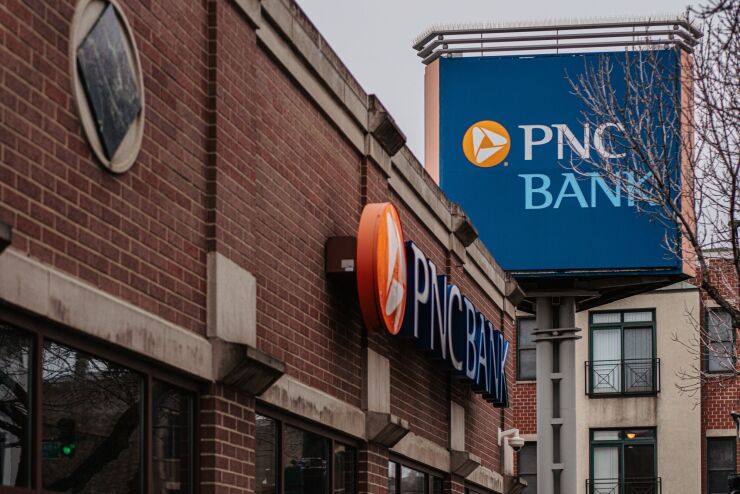
PNC Financial Services Group: 64 net closures, 2,327 branches total
PNC closed dozens of branches this year, but the Pittsburgh-based super-regional bank is gearing up for growth in several markets.
In November, PNC doubled its goals for branch openings in the next few years, from 100 locations to 200. The company is investing some $1.5 billion for the openings and the renovations of some 1,400 branches.
The original expansion plan included new branches in Denver and Miami, plus Texas markets such as Dallas, Houston, San Antonio and Austin. But November's announcement will mean an expansion of branches in Atlanta; Charlotte and Raleigh, North Carolina; Orlando and Tampa, Florida; and Phoenix.
"The concept here is relatively simple — same time-tested business model, same credit box, just operate it in bigger and faster growing markets," Michael Lyons, a longtime PNC executive who this year was tapped to
In the past, PNC's plans to become a major coast-to-coast bank have included acquisitions, such as
But the company isn't "going to sit around and wait for history to pass us," Demchak said, and is thus stepping up its branch investments.
"We have a big tailwind right now in terms of business momentum, the ability to grow clients in these new markets, the rate environment, the credit environment, real belief in our franchise, and it's time to invest into it," Demchak said.
